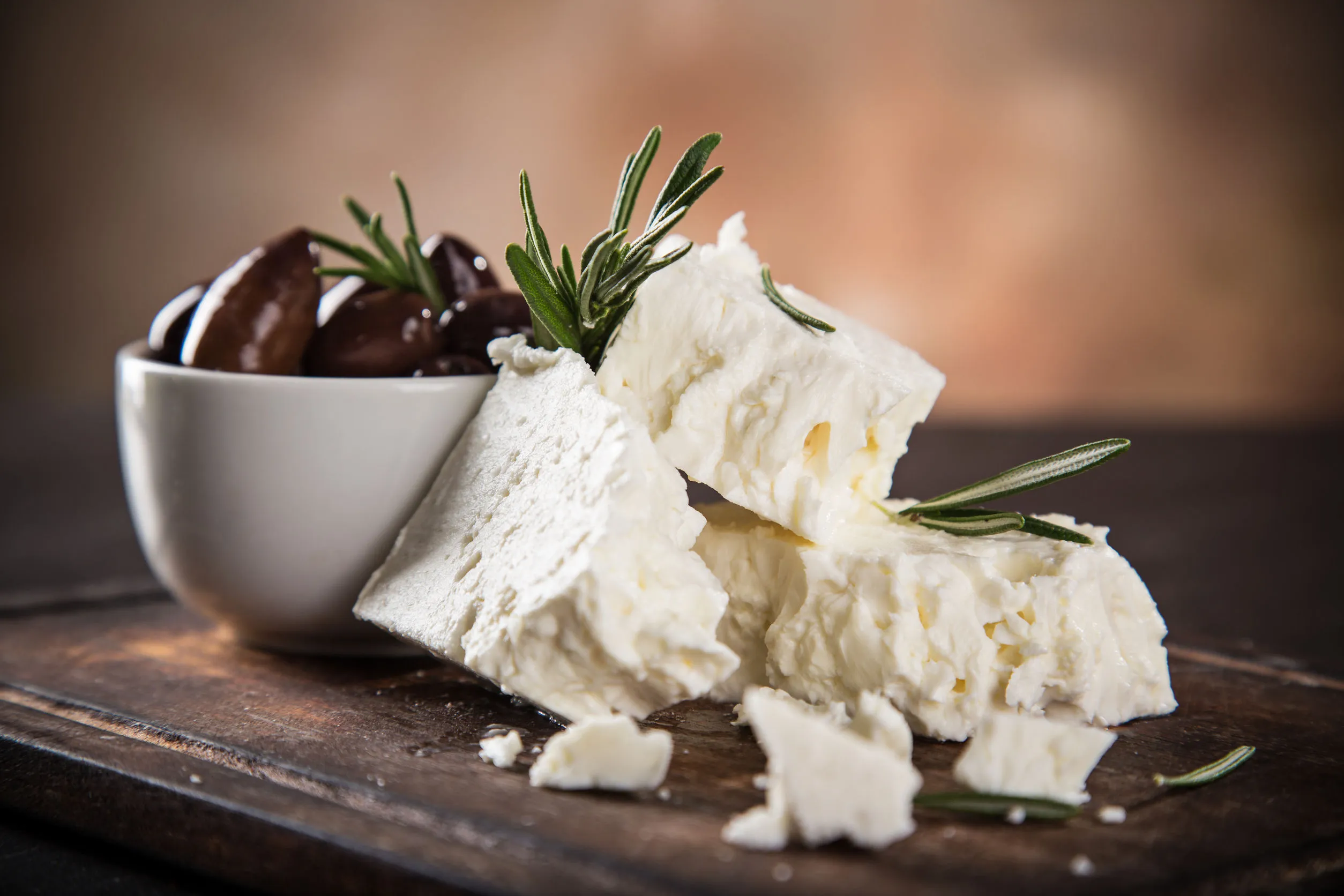Imagine transforming a simple gallon of milk into a creamy, tangy Greek delicacy right in your own kitchen! Forget store-bought feta and embark on a culinary journey that will not only impress your friends and family but also connect you to centuries-old cheesemaking traditions. Our foolproof homemade feta cheese recipe is about to turn you into a cheese-making maestro, with minimal effort and maximum flavor explosion!
Prep Time: 15 mins
Cook Time: 60 mins
Total Time: 75 mins
Cuisine: Greek
Serves: 1 cup
Ingredients
- 1 gallon whole milk
- 1/4 cup white vinegar
- 1 teaspoon salt
- 1/4 teaspoon rennet (optional)
Instructions
- Begin by gathering all your ingredients and equipment. You will need a large pot, a thermometer, a slotted spoon, a cheesecloth, a colander, and a bowl for draining the curds.
- Pour the gallon of whole milk into the large pot and place it over medium heat. Stir the milk gently to prevent it from scorching on the bottom.
- Heat the milk until it reaches 190°F (88°C). Use a thermometer to monitor the temperature closely. This process should take about 10-15 minutes.
- Once the milk reaches 190°F, remove the pot from heat. Slowly stir in the 1/4 cup of white vinegar. This will help the milk to curdle and form curds and whey. Stir gently for about 1 minute.
- If using rennet, dilute 1/4 teaspoon of rennet in a small amount of cool, non-chlorinated water. Stir this mixture into the milk after adding the vinegar and let it sit undisturbed for 5-10 minutes. This will help the curds to form more firmly.
- After the resting period, you should see the curds and whey separating. The curds should be soft and somewhat gelatinous. Using a slotted spoon, gently scoop the curds into a colander lined with cheesecloth.
- Gather the corners of the cheesecloth and tie them together to form a pouch. Allow the curds to drain for about 30 minutes. If you prefer a drier feta, let it drain longer.
- After draining, transfer the curds to a mixing bowl. Sprinkle in the 1 teaspoon of salt and mix gently with your hands or a spatula until evenly distributed.
- At this stage, you can also mix in any additional herbs or spices if desired, such as oregano or crushed red pepper flakes for added flavor.
- To store your homemade feta, you can either crumble it into a container or press it into a mold for a firmer texture. If you choose to press it, place a weight on top to help it firm up.
- For a brined feta, dissolve 1/4 cup of salt in 4 cups of water to create a brine solution. Submerge your feta in the brine and refrigerate. This will enhance the flavor and preserve the cheese.
- Let the feta sit in the brine for at least 24 hours before using it. Homemade feta can be stored in the refrigerator for up to a week, or longer if kept in brine.
Tips
- Use the freshest, highest-quality whole milk you can find - organic milk works best for rich, creamy results.
- Invest in a reliable kitchen thermometer to ensure precise temperature control during the cheese-making process.
- Be patient during the curd formation - gentle stirring and proper temperature are key to achieving the perfect texture.
- Experiment with herb additions like dried oregano, thyme, or red pepper flakes to customize your feta's flavor profile.
- Always use clean, sterilized equipment to prevent unwanted bacterial growth.
- For a creamier texture, drain the curds for a shorter time; for a firmer cheese, allow longer draining.
- The brine solution is crucial - it not only adds flavor but helps preserve your homemade feta.
- Store your feta in an airtight container in the refrigerator, preferably submerged in brine to maintain its moisture and taste.
Nutrition Facts
Calories: 360kcal
Carbohydrates: 6g
Protein: 24g
Fat: 28g
Saturated Fat: 18g
Cholesterol: 100mg


